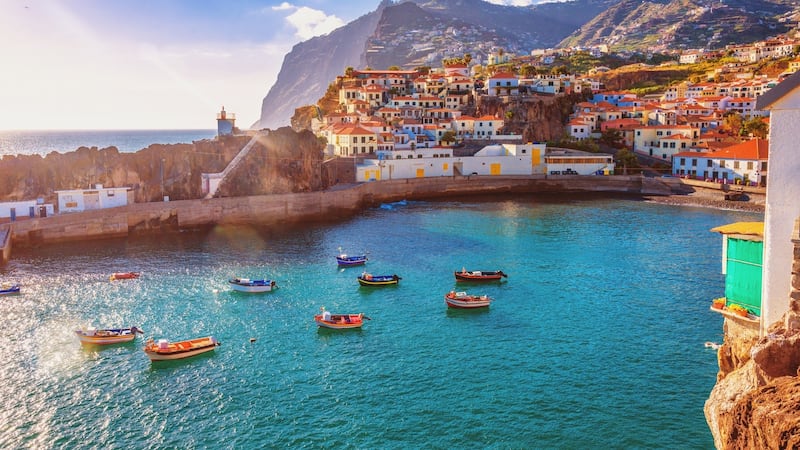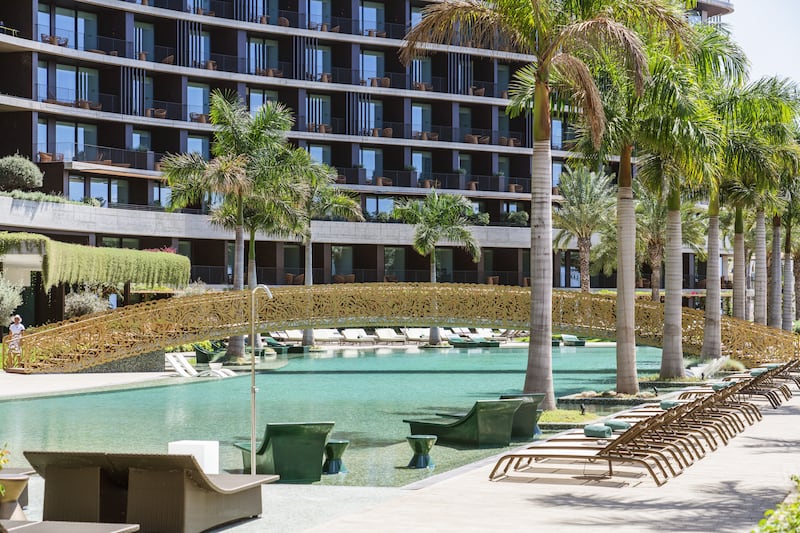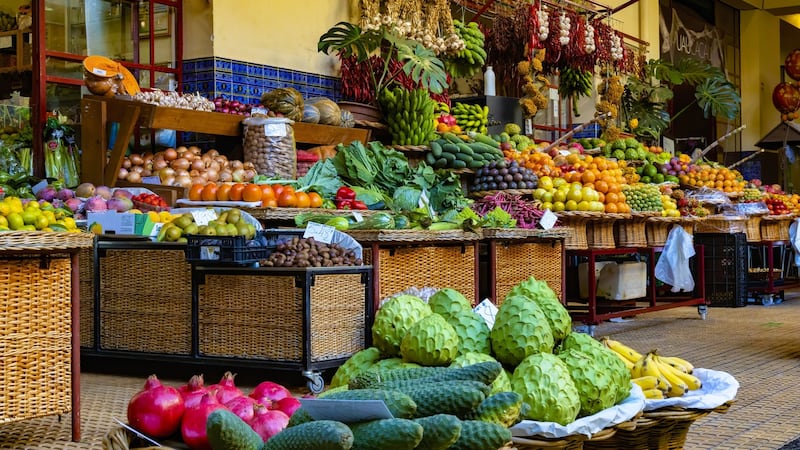It’s too easy to say a destination is a feast for the senses. Sure, I often think as friends reel off their holiday highlights. What they usually mean is that the place simply contains unfamiliar scents and punchy street food.
The moment I’m convinced that Madeira could rightfully claim that title is the depths of the Levada Da Serra Do Faiala, 10km from the capital of Funchal. In the thick untamed forest, mottled dark with trees stealing sunlight from the vegetation below, I’m following a path set by levadas. These are water canals created in the 15th century, once used to channel rainwater from the top of this mountainous, isolated island down to its drier south.
It’s along this walk, amongst two-toned roses and bold hydrangeas, that the bold purple of the Madeira germander flower announces itself as I turn a corner. Stopping to admire them, the lush, large leaves soon become the attraction: they’re soft to the touch, like nature’s velvet, and its feel is too moreish to ignore. Until I’m gently ushered on by my guide Elizeu, that is.

A dot in the middle of the Atlantic Ocean, Madeira is 700km from the coast of Morocco, though under Portuguese jurisdiction since 1419 (bar a short stint under Spanish rule). For thousands of years, endemic flora and fauna like germander thrived in this isolated archipelago. Even species that aren't specific to Madeira grow wildly in the lush south. My holiday snaps look as if I'm trying to frame them artfully with branches in the foreground, but it was a happy accident – the darn things are perfectly positioned everywhere.
Its natural wonder is one of many reasons that Madeira become as a major tourist destination in the last decade. Before that, it seemed to be Europe’s answer to Florida: a place where retirees lived out their best lives enjoying its world-famous wine, farm-fresh food and a warm climate that even in the winter months doesn’t drop below double digits.
The rise in mass tourism has shifted Madeira's brand. Today, its appeal is broader: a network of hiking and cycling routes, a range of wellness offerings, and the adrenaline rush of watersports around the island. A new direct Ryanair flight from Dublin to Madeira this year will attract many more visitors from Ireland.

I’m staying in the Savoy Palace, a contemporary five-star hotel that proves how the island has built on its natural appeal to become even more of a holiday hotspot. In its restaurants, the menus make the most of the ingredients found on the island – in the relaxed option of Pau de Lume, freshly-caught red snapper, served with julienned sautéed vegetables and a refreshing side bowl of tabbouleh and avocado salad, is the most popular choice. Later, settled in the sweeping rooftop terrace of Galáxia Skybar, a dazzlingly bright purple dragon fruit cosmopolitan kicks off the evening. The island’s mystical Laurisilva forest is the inspiration for the Laurea Spa.

The hotel offers yoga sessions in the laurel forest among its excursions. Once covering much of southern Europe until the last Ice Age, laurel forests are now confined to Madeira, Azores and the Canary Islands. Here, they've been cut down and only 15,000 hectares remain. The only saving grace is it's now a Unesco world heritage site, so the remaining forest is fiercely protected.
On the early morning we set off to Laurisilva, the waking sun gives way to wispy clouds as we steer high up in the mountains. When we arrive, we’re in the clouds themselves. Tendrils of the dense fog creep past us as the group place their mats down between the crooked trees and inquisitive birds. Granted, the craggy, uneven ground is far from the comfort of a yoga studio and the wind refuses to let the rock-weighted mats rest on the ground, but at least it feels wild and elemental.
Even in the urban centre of Funchal, it's difficult to escape Madeira's natural beauty. The 15-minute walk from the hotel to the old town veers past Santa Catarina Park. The manicured shrubbery is crammed with flowers you'd usually see in exotic bunches: birds of paradise, alstroemeria and primary red hibiscus encircle the lake and chapel.

Past the park, it’s a thrumming capital with wide, well-kempt roads, busy with traders, locals and tourists.
Madeira 101 attractions are plentiful; the history of Madeira is on display at the Madeira Story Centre. Its wine is covered at Blandy’s Wine Lodge. (To avoid the disappointment I encountered, note Madeira’s namesake cake is nowhere to be seen – it was created by the Brits to serve with its wine.)
Football fans will enjoy The Museu CR7, the museum dedicated to Madeira's most famous son, Cristiano Ronaldo. The cable car is a hotbed of activity, taking tourists the scenic route to the colonial town of Monte. For an entertaining return journey, take the Carreiros do Monte: a wicker toboggan entertainingly steered by two finely-dressed Madeirans, which reaches speeds of up to 50kmh.
But my favourite spot to hang out in the city is the market of Mercado dos Lavradore, admiring all the tropical fruits and vegetables that I didn’t know existed, and diligently avoiding the fish market, where the day’s haul is cleaned up and distributed out. Fortunately by the time I arrive at lunch, the day’s business has been done, and all that’s left is puddles of blood and water, and a pungent smell hanging in the air.
In a more aromatic corner, I amble past passion fruits of various colours, bunches of small, sweet bananas, and Monstera deliciosa: a Frankensteiny part-banana, part-pineapple type fruit. There are perfect rows of bulbous avocados, oversized courgettes, and vibrant tomatoes ready to burst. A feast for the senses, indeed.
Shilpa Ganatra was a guest of Savoy Palace Hotel. Doubles from €195 a night, savoysignature.com. Ryanair fly direct from Dublin to Funchal, ryanair.com.























